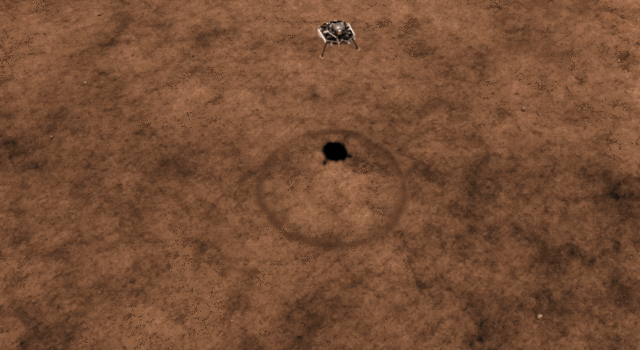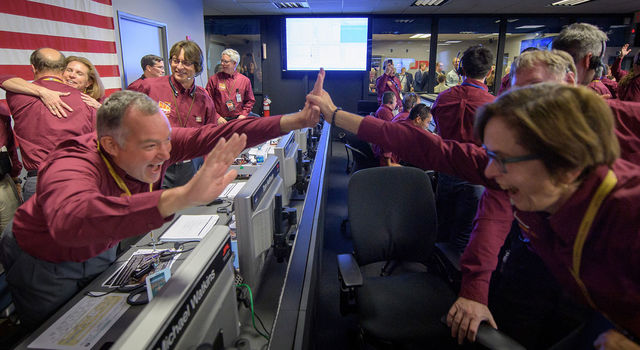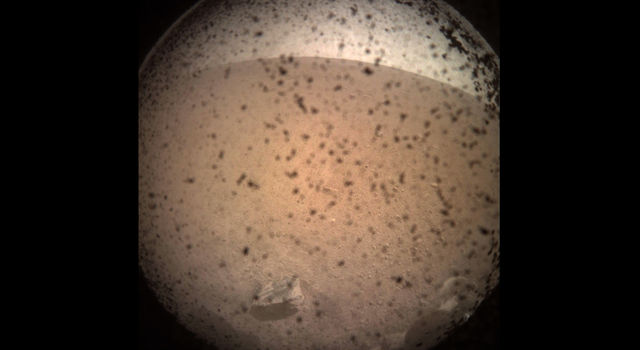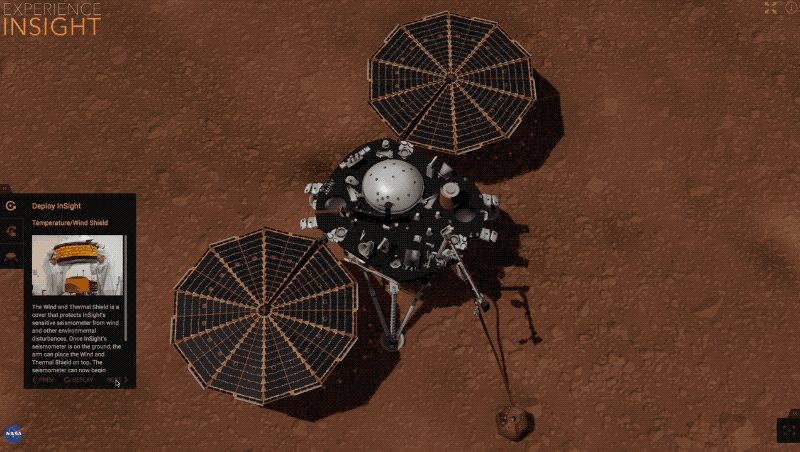Teachable Moments | November 15, 2018
NASA’s ‘Cyber Monday’ Mars Landing to Deliver Science Firsts
UPDATE: Nov. 27, 2018 – The InSight spacecraft successfully touched down on Mars just before noon on Nov. 26, 2018, marking the eighth time NASA has succeeded in landing a spacecraft on the Red Planet. This story has been updated to reflect the current mission status. For more mission updates, follow along on the InSight Mission Blog, JPL News, as well as Facebook and Twitter (@NASAInSight, @NASAJPL and @NASA).
In the News
NASA’s newest mission to Mars, the InSight lander, touched down just before noon PST on Nov. 26. So while some people were looking for Cyber Monday deals, scientists and engineers at NASA’s Jet Propulsion Laboratory were monitoring their screens for something else: signals from the spacecraft that it successfully touched down on the Red Planet.
InSight spent nearly seven months in space, kicked off by the first interplanetary launch from the West Coast of the U.S. Once it arrived at the Red Planet, InSight had to perform its entry, descent and landing, or EDL, to safely touch down on the Martian surface. This was perhaps the most dangerous part of the entire mission because it required that the spacecraft withstand temperatures near 1,500 degrees Fahrenheit, quickly put on its brakes by using the atmosphere to slow down, then release a supersonic parachute and finally lower itself to the surface using 12 retrorockets.
When NASA’s InSight descends to the Red Planet on Nov. 26, 2018, it is guaranteed to be a white-knuckle event. Rob Manning, chief engineer at NASA’s Jet Propulsion Laboratory, explains the critical steps that must happen in perfect sequence to get the robotic lander safely to the surface. | Watch on YouTube
But even after that harrowing trip to the surface, InSight will have to overcome one more challenge before it can get to the most important part of the mission, the science. After a thorough survey of its landing area, InSight will need to carefully deploy each of its science instruments to the surface of Mars. It may sound like an easy task, but it’s one that requires precision and patience.
It’s also a great opportunity for educators to engage students in NASA’s exploration of Mars and the importance of planetary science while making real-world connections to lessons in science, coding and engineering. Read on to find out how.
How It Works: Deploying InSight’s Instruments
InSight is equipped with three science investigations with which to study the deep interior of Mars for the first time. The Seismic Experiment for Interior Structures, or SEIS, is a seismometer that will record seismic waves traveling through the interior of Mars.
These waves can be created by marsquakes, or even meteorites striking the surface. The Heat Flow and Physical Properties Package, or HP3, will investigate how much heat is still flowing out of Mars. It will do so by hammering a probe down to a depth of up to 16 feet (about 5 meters) underground. The Rotation and Interior Structure Experiment, or RISE, will use InSight’s telecommunications system to precisely track the movement of Mars through space. This will shed light on the makeup of Mars’ iron-rich core.But to start capturing much of that science data, InSight will have to first carefully move the SEIS and HP3 instruments from its stowage area on the lander deck and place them in precise locations on the ground. Among its many firsts, InSight will be the first spacecraft to use a robotic arm to place instruments on the surface of Mars. Even though each instrument will need to be lowered only a little more than three feet (1 meter) to the ground, it’s a delicate maneuver that the team will rehearse to make sure they get it right.
InSight’s robotic arm is nearly 6 feet (about 2 meters) long. At the end of the arm is a five-fingered grappler that is designed to grab SEIS and HP3 from the deck of the lander and place them on the ground in front of the lander in a manner similar to how a claw game grabs prizes and deposits them in the collection chute. But on Mars, it has to work every time.
InSight will be the first mission on another planet to use a robotic arm to grasp instruments and place them on the surface. While it may look like an arcade machine, this space claw is designed to come away with a prize every time. | Watch on YouTube
Before the instruments can be set down, the area where they will be deployed – commonly referred to as the work space – must be assessed so SEIS and HP3 can be positioned in the best possible spots to meet their science goals. InSight is designed to land with the solar panels at an east-west orientation and the robotic arm facing south. The work space covers about three-square meters to the south of the rover. Because InSight is a three-legged lander and not a six-wheeled rover, science and engineering teams must find the best areas to deploy the instruments within the limited work space at InSight’s landing spot. That is why choosing the best landing site (which for InSight means one that is very flat and has few rocks) is so important.
Just as having two eyes gives us the ability to perceive depth, InSight will use a camera on its robotic arm to take what are known as stereo-pair images. These image pairs, made by taking a photo and then moving the camera slightly to the side for another image, provide 3D elevation information that’s used by the science and engineering teams. With this information, they can build terrain maps that show roughness and tilt, and generate something called a goodness map to help identify the best location to place each instrument. Evaluating the work space is expected to take a few weeks.
Once the team has selected the locations where they plan to deploy the instruments, the robotic arm will use its grapple to first grab SEIS and lower it to the surface. When the team confirms that the instrument is on the ground, the grapple will be released and images will be taken. If the team decides they like where the instrument is placed, it will be leveled, and the seismic sensor will be re-centered so it can be calibrated to collect scientific data. If the location is deemed unsuitable, InSight will use its robotic arm to reposition SEIS.
But wait, there’s more! SEIS is sensitive to changes in air pressure, wind and even local magnetic fields. In fact, it is so sensitive that it can detect ground movement as small as half the radius of a hydrogen atom! So that the instrument isn’t affected by the wind and changes in temperature, the robotic arm will have to cover SEIS with the Wind and Thermal Shield.
After SEIS is on the ground and covered by the shield, and the deployment team is satisfied with their placement, the robotic arm will grab the HP3 instrument and place it on the surface. Just as with SEIS, once the team receives confirmation that HP3 is on the ground, the grapple will be released and the stability of the instrument will be confirmed. The final step in deploying the science instruments is to release the HP3 self-hammering mole from within the instrument so that it will be able to drive itself into the ground. The whole process from landing to final deployment is expected to take two to three months.
Why It’s Important
For the science instruments to work – and for the mission to be a success – it’s critical that the instruments are safely deployed. So while sending a mission to another planet is a huge accomplishment and getting pictures of other worlds is inspiring, it’s important to remember that science is the driver behind these missions. As technologies advance, new techniques are discovered and new ideas are formulated. Opportunities arise to explore new worlds and revisit seemingly familiar worlds with new tools.
Using its science instruments, SEIS and HP3, plus the radio-science experiment (RISE) to study how much Mars wobbles as it orbits the Sun, InSight will help scientists look at Mars in a whole new way: from the inside.
SEIS will help scientists understand how tectonically active Mars is today by measuring the power and frequency of marsquakes, and it will also measure how often meteorites impact the surface of Mars.
HP3 and RISE will give scientists the information they need to determine the size of Mars’ core and whether it’s liquid or solid; the thickness and structure of the crust; the structure of the mantle and what it’s made of; and how warm the interior is and how much heat is still flowing through.
Answering these questions is important for understanding Mars, and on a grander scale, it is key to forming a better picture of the formation of our solar system, including Earth.
Teach It
Use these resources to bring the excitement of NASA’s newest Mars mission and the scientific discovery that comes with it into the classroom.
-

Robotic Arm Challenge
In this challenge, students will use a model robotic arm to move items from one location to another. They will engage in the engineering design process to design, build and operate the arm.
Grades K-8
Time 30 mins - 1 hr
-
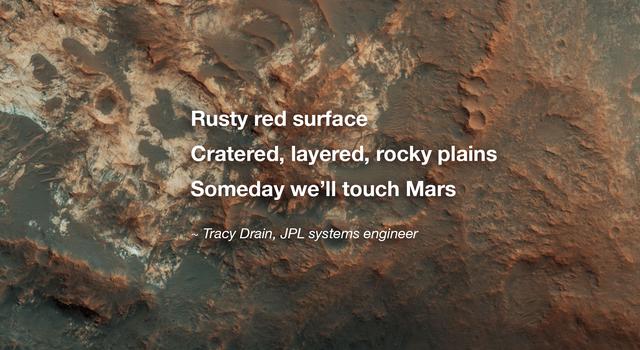
*NEW* Planetary Poetry
In this cross-curricular STEM and language arts lesson, students learn about planets, stars and space missions and write STEM-inspired poetry to share their knowledge of or inspiration about these topics.
Grades 2-12
Time 1-2 hrs
-
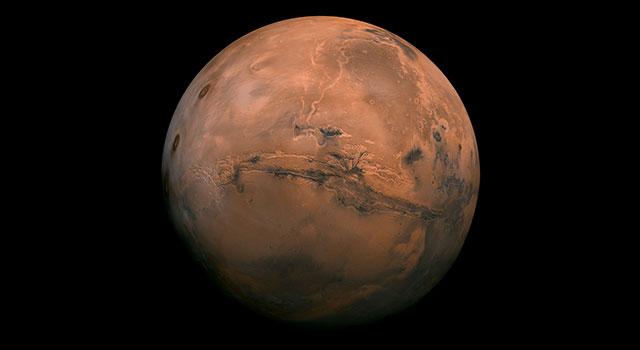
*NEW* Exploring the Colors of Mars
Students use satellite and rover images to learn about the various features and materials that cause color variation on the surface of Mars, then create their own “Marscape.”
Grades 2 and 5
Time 1-2 hrs
-
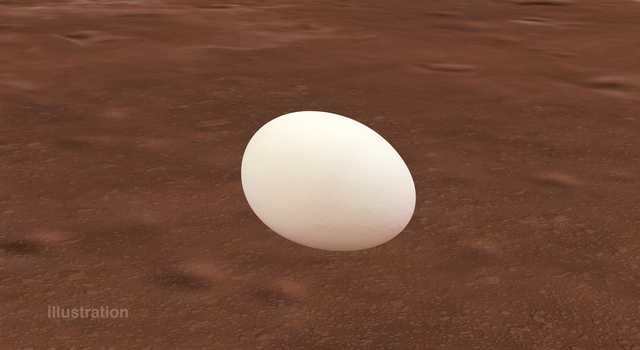
*NEW* Planetary (Egg) Wobble and Newton's First Law
Students try to determine the interior makeup of an egg (hard-boiled or raw) based on their understanding of center of mass and Newton’s first law of motion.
Grades 3, 6-8
Time 30 mins - 1 hr
-
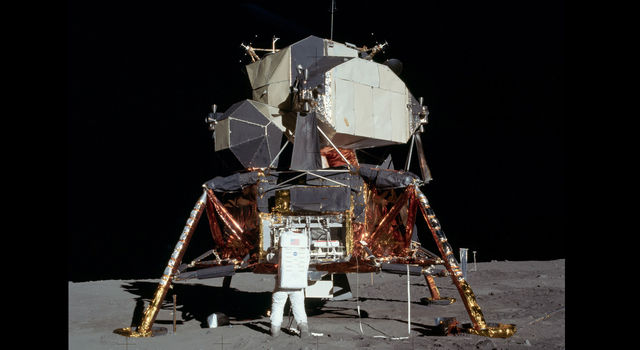
Touchdown
Students design and build a shock-absorbing system that will protect two "astronauts" when they land.
Grades 3-8
Time 30 mins - 1 hr
-
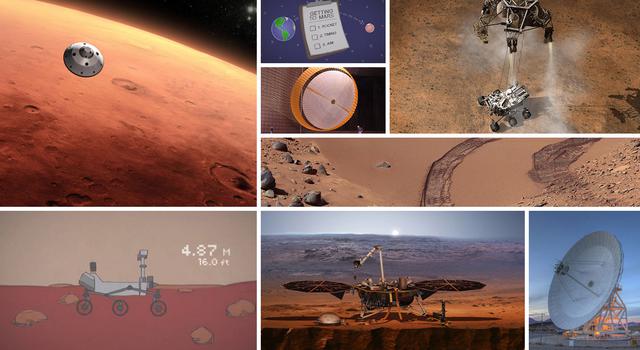
Mission to Mars Unit
In this 19-lesson, standards-aligned unit, students learn about Mars, design a mission to explore the planet, build and test model spacecraft and components, and engage in scientific exploration.
Grades 3-8
Time Varies
-
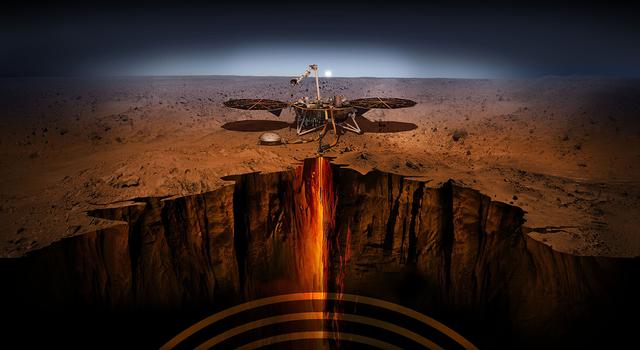
*NEW* Heat Flow Programming Challenge
Students use microcontrollers and temperature sensors to measure the flow of heat through a soil sample.
Grades 5-12
Time 1-2 hrs
-
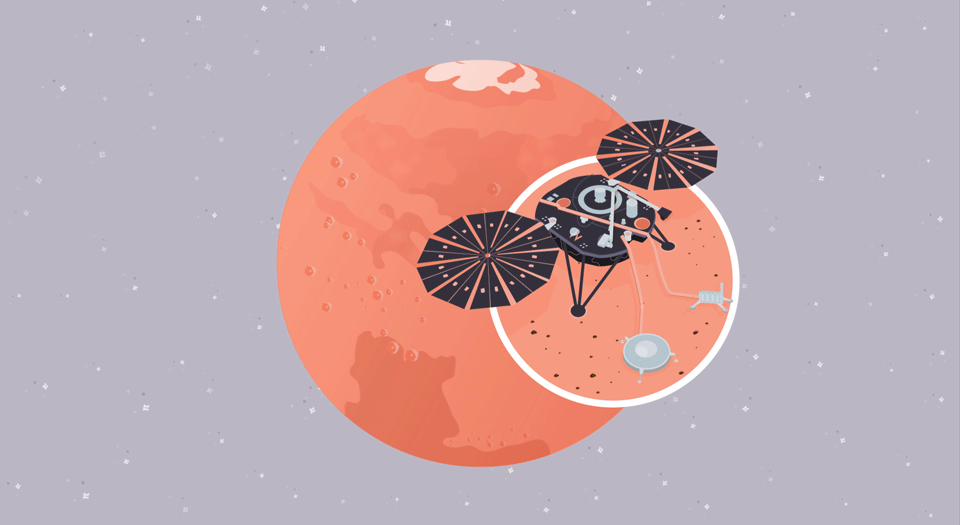
Quake Quandary
In this illustrated math problem, students use the mathematical constant pi to identify the timing and location of a seismic event on Mars, called a "marsquake."
Grades 11-12
Time Less than 30 mins
-
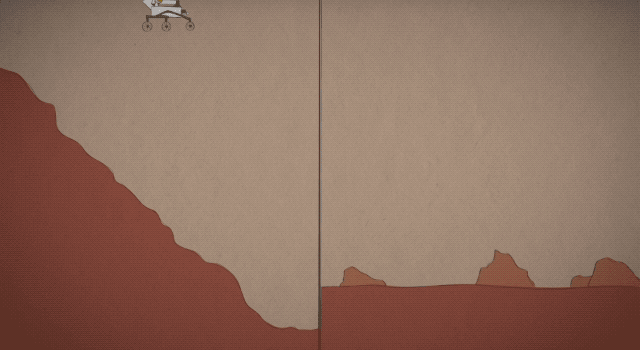
Mars in a Minute: How Do You Choose a Landing Site?
So, you want to study Mars with a lander or rover – but where exactly do you send it? Learn how scientists and engineers tackle the question of where to land on Mars in this 60-second video.
-
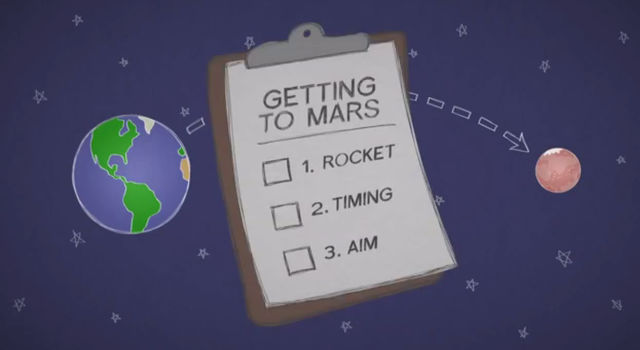
Mars in a Minute: How Do You Get to Mars?
What does it take to get a spacecraft to Mars? This 60-second video covers a few key things to remember when planning a trip to the Red Planet.
-
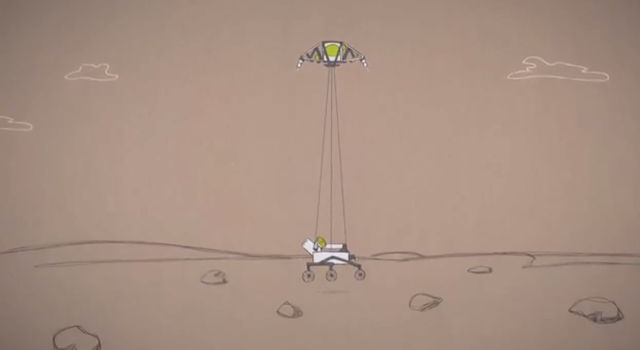
Mars in a Minute: How Do You Land on Mars?
Getting a spacecraft to Mars is one thing. Getting it safely to the ground is a whole other challenge! This 60-second video from NASA's Jet Propulsion Laboratory explains three ways to land on the surface of the Red Planet.
-
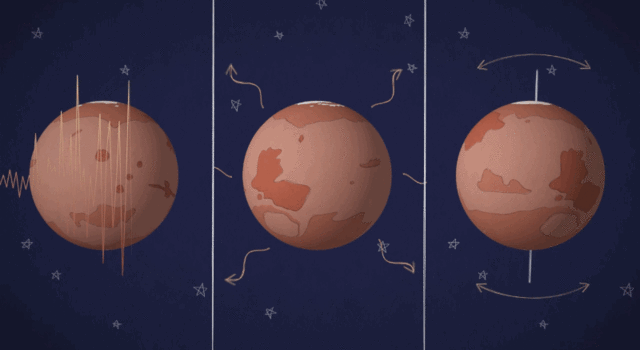
Mars in a Minute: What's Inside Mars?
We know what the Red Planet looks like from the outside – but what's going on under the surface of Mars?
-
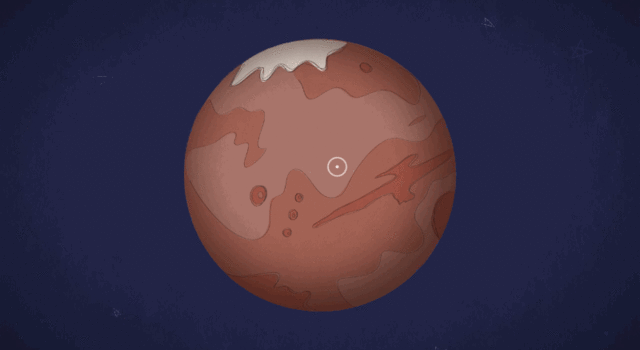
Mars in a Minute: Are There Quakes on Mars?
Are there earthquakes on Mars – or rather, "marsquakes"? What could they teach us about the Red Planet?
-
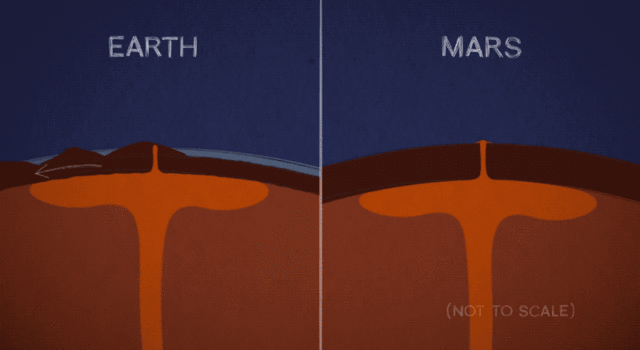
Mars in a Minute: How Did Mars Get Such Enormous Mountains?
Why are the tallest peaks in the solar system found on one of its smallest worlds? Like any planet, how Mars looks outside is tied to what goes on inside.
Explore More
Follow Along
Resources and Activities
- Teachable Moment: NASA InSight Lander to Get First Look at ‘Heart’ of Mars
- InSight Lessons
- Mars Lessons
- Mars Activities for Students
Feature Stories and Podcasts
- InSight Podcast: "On a Mission"
- "NASA/JPL Interns Join Mars Landing-Site Dude to Prepare for Touchdown" – Nov. 26, 2018
- "The 'Claw Game' on Mars Plays to Win" – Oct. 16, 2018
- "NASA's InSight Will Study Mars While Standing Still" – Oct. 24, 2018
- "The Mars InSight Landing Site is Just Plain Perfect" – Nov. 5, 2018
Websites and Interactives
TAGS: InSight, Landing, Mars, K-12 Educators, Informal Educators, Engineering, Science, Mission Events




